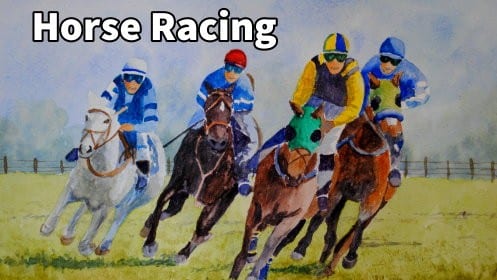Short Class Video
Class Tutorial
Paint the background

Wet the background and float in some Blue for the sky. Go carefully around the Jockeys. Protect them with masking fluid if you have to.
While still a bit damp but not completely wet, bring in some Yellow Green for distant trees and a darker colour for the shadows.
Paint the grass
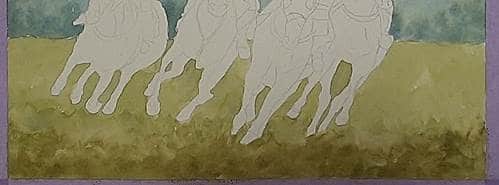
Paint the turf with a light Green mix of Sap Green. As you are doing this you need to slowly and carefully leave out the horse’s bodies and legs.
If you happen to go into this area, quickly dab over it with a tissue. Paint the lower section with darker Sap Green.. Leave it rough.
Dry it and with a hoghair brush, filled with green paint, dab the flat side randomly onto the paper. The long hairs tend to leave the impression of grass. Continue to build up the impression as shown.
Paint the fence

With a dark colour and a small round brush paint in the distant fence.
Paint the figures
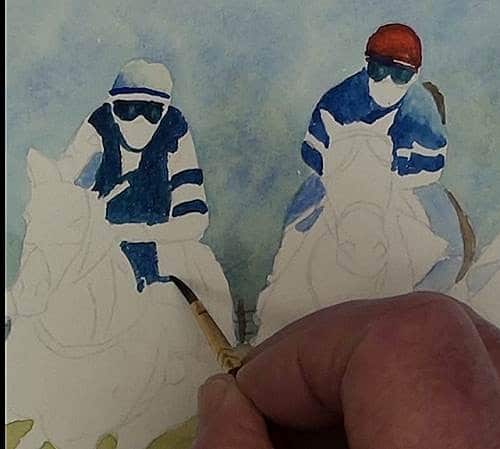
Now the fun begins. With a small round brush, begin by painting in the various coloured caps as well as the dark racing glasses.
The main light is coming from the right. Each hat and clothing is unique to that particular jockey.
When painting the jockey be careful not to paint into the horse area.
Note the various tonal ranges to simulate the rounding of the body. To make them look like people paint the faces with some light Orange or light Burnt Sienna.
Don’t try to paint the facial features as yet. Carry on painting the other jockey’s clothing.
Paint the horses

Paint the headgear of the horses in their different colours. The horse on the left is White so the shading will be done with a Blue/gray mixed from the previous light blue mix with a tiny touch of Red into it.
Carefully add the different tonal ranges, all the while comparing against the reference photograph. With a light Brown begin adding in the bridle, the chaps of the jockey and also strengthening up the shadows for contrast. Paint the hooves and the horses face.
Paint the second horse
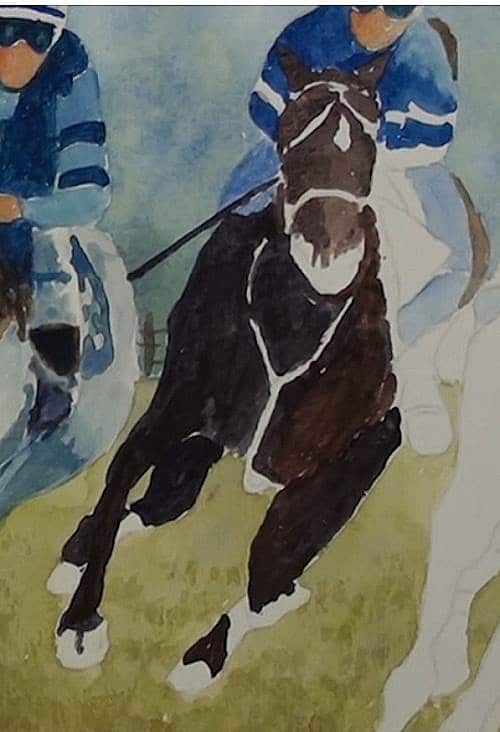
Paint in the deep shadow first and with a lighter colour paint the head. Add some Gray for the hooves, and with a damp brush lift out the highlights on the body parts.
Add the shadow on the grass. Remember they are at full gallop and not all legs are on the ground. The shadow must simulate the roughness of the grass.
Paint the third horse
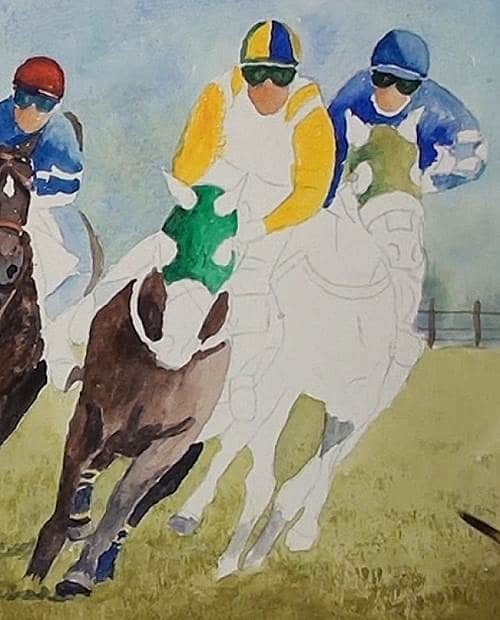
Continue blocking in the various tonal ranges of the last two horses. Don’t try to paint them in exactly the same colour ranges. Make them slightly different to each other. The painting is starting to come together now.
Paint the clothing
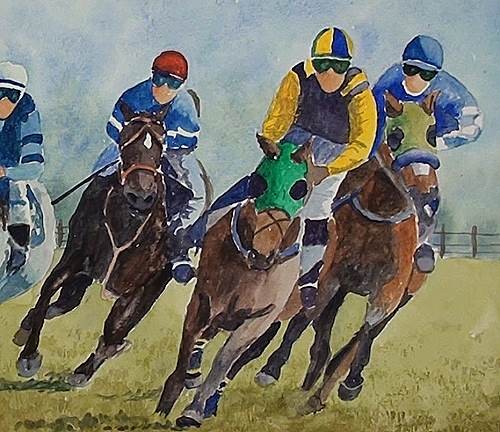
We can now work on the clothing. Block in all the small patches of colour. Note that in some areas the clothing tends to merge into each other in the shady areas. The front jockey in his Yellow shirt is the focus point of the painting and can be a bit more detailed than the other jockeys.
Notice how the colours are mostly in different shapes rather than details. The brain compensates for all this in the end. Only add a very light line for the mouth. That’s all the detail in the faces.
To finalize the painting, a few loose horizontal stripes, randomly placed will add to the realism of the scene. Most paintings don’t need to be highly detailed.
Final painting
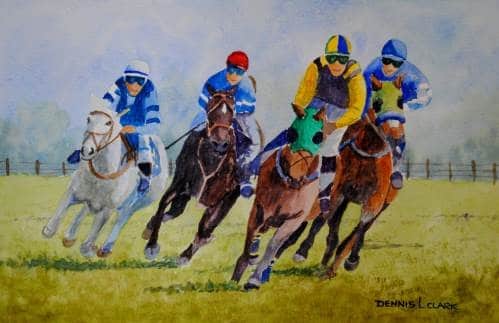
Click the button below to view the real time follow along version of this class:
Pin Me

